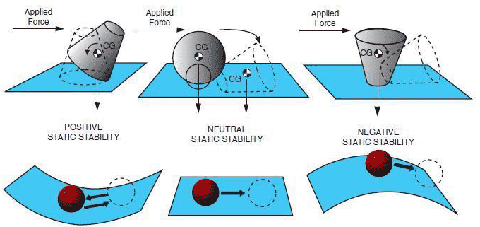Aerodynamics of Flight: Basic Concepts of Stability
 |
| Types of airplane stability |
The flight paths and attitudes in which an airplane can fly are limited only by the aerodynamic characteristics of the airplane, its propulsive system, and its structural strength.
These limitations indicate the maximum performance and maneuverability of the airplane. If the airplane is to provide maximum utility, it must be safely controllable to the full extent of these limits without exceeding the pilot's strength or requiring exceptional flying ability. If an airplane is to fly straight and steady along any arbitrary flight path, the forces acting on it must be in static equilibrium. The reaction of any body when its equilibrium is disturbed is referred to as stability.
There are two types of stability; static and dynamic. Static will be discussed first, and in this discussion the following definitions will apply:
Equilibrium — All opposing forces acting on the airplane are balanced; (i.e., steady, un-accelerated flight conditions).
Static Stability — The initial tendency that the airplane displays after its equilibrium is disturbed.
Positive Static Stability — The initial tendency of the airplane to returned to the original state of equilibrium after being disturbed.
Negative Static Stability — The initial tendency of the airplane to continue away from the original state of equilibrium after being disturbed.
Neutral Static Stability — The initial tendency of the airplane to remain in a new condition after its equilibrium has been disturbed.



Comments
Post a Comment